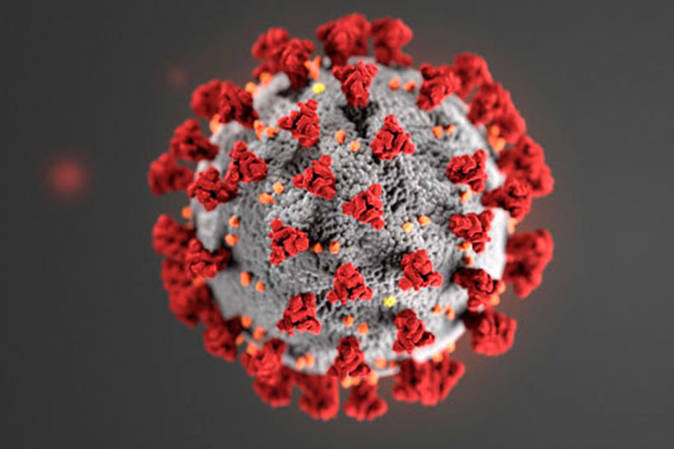Alaska’s Public Health experts Thursday repeated their call for people to wash their hands, socially distance and wear a mask around others as the state continues to see a steady increase in cases.
During a weekly video conference with members of the media, Alaska’s Chief Medical Officer Dr. Anne Zink said that nationally, people of color are being disproportionately affected by the disease. Based on current data, this appears to be true for Alaska as well. The weekly case summary from the Department of Health and Social Services released Wednesday stated that American Indians and Alaska Natives have accounted for 20% of the state’s cases while only being 16% of the state’s population. Native Hawaiians and Pacific Islanders make up 6% of the overall cases while only being 1% of Alaska’s population. Zink said that Native Hawaiians and Pacific Islanders also make up a disproportionate percentage of the patients who are hospitalized in the state.
“For a long time our numbers for hospitalizations and deaths were so low it was hard to say much,” Zink said. “So that continues to be an area of concern.”
Alaska’s Chief Epidemiologist Dr. Joe McLaughlin said during the conference that he is concerned specifically about the fact that a large portion of the new cases are being found in young adults, and more recently in people under 20.
“We don’t know exactly why this is happening, and we’re seeing the same trend in the Lower 48,” McLaughlin said. “It could be because these younger adults are less compliant with interventions like social distancing and mask use, hand-washing and self-quarantining if they’ve been exposed. They may also be more likely to congregate at parties and other social venues, whether it’s bars or nightclubs. And they may also be more likely to physically go into work and be exposed in an occupational setting.”
McLaughlin said that messaging should be targeted to these younger adults around the importance of social distancing and mask-wearing in mitigating the spread of the virus.
“They really need to step up and do their part to help decrease transmission,” McLaughlin said. “Because while their risk is much lower than older adults and people with underlying medical conditions of having more severe COVID illness and hospitalization and potentially fatality, there is still some risk for them to become hospitalized or die from COVID. But even more importantly, they serve as vectors to other people within the community, and it just facilitates propagation of this virus throughout the communities that are affected.”
COVID-19 in Alaska: By the numbers
Alaska saw 120 new COVID-19 cases, three additional hospitalizations and one new death associated with the disease Thursday, according to DHSS.
The Alaska resident who died was a man from Anchorage in his 60s. The state reported that he had underlying health conditions in addition to being positive for COVID-19. He is the 23rd Alaskan to die after contracting the disease since the state began monitoring the pandemic.
Of the new cases reported Thursday, 84 are residents and 36 are nonresidents. Five of the resident cases are residents of the Kenai Peninsula, with four living in Soldotna and one in Kenai. The nonresident cases include 23 seafood industry workers in Seward and one visitor in Soldotna.
The three hospitalizations reported Thursday bring the total number of people who have been hospitalized by the disease to 128. This number includes people who have died as well as people who have recovered and gone home. Currently there are 37 COVID-19 patients hospitalized statewide and an additional eight who are considered under investigation. There are three COVID-19 patients in the state who currently require treatment on a ventilator.
Statewide a total of 225,057 tests for COVID-19 have been conducted. The average positivity rate of test results in the last three days is 2.44%.
Locally, Central Peninsula Hospital has conducted a total of 3,215 tests, with 55 coming back positive, 3,080 coming back negative and 76 pending results.
South Peninsula Hospital has conducted a total of 6,192 tests, with 101 coming back positive, 5,984 coming back negative and 107 pending results.
Testing locations on the Kenai Peninsula
On the central peninsula, testing is available at Capstone Family Clinic, K-Beach Medical, Soldotna Professional Pharmacy, Central Peninsula Urgent Care, Peninsula Community Health Services, Urgent Care of Soldotna, the Kenai Public Health Center and Odyssey Family Practice.
In Seward, testing is available at Seward Community Health Center, Providence Seward Medical Center, Glacier Family Medicine and Chugachmiut North Star Clinic.
Call Kenai Public Health at 907-335-3400 for information on testing criteria for each location.
Testing continues to be available from 10 a.m. to 8 p.m. daily at South Peninsula Hospital’s main entrance as well as through SVT Health & Wellness clinics in Homer, Seldovia and Anchor Point. Call ahead at the hospital at 907-235-0235 and at the SVT clinics at 907-226-2228.
Testing is also available at the NTC Community Clinic in Ninilchik. The NTC Community Clinic is the Indian Health Service provider for the Ninilchik Tribe.
The clinic is providing testing with a rapid testing machine to those with symptoms, travelers and asymptomatic people. There are currently no restrictions on who can get tested. To make an appointment to be tested at the NTC Community Clinic, call 907-567-3970.
Reach reporter Brian Mazurek at bmazurek@peninsulaclarion.com.

